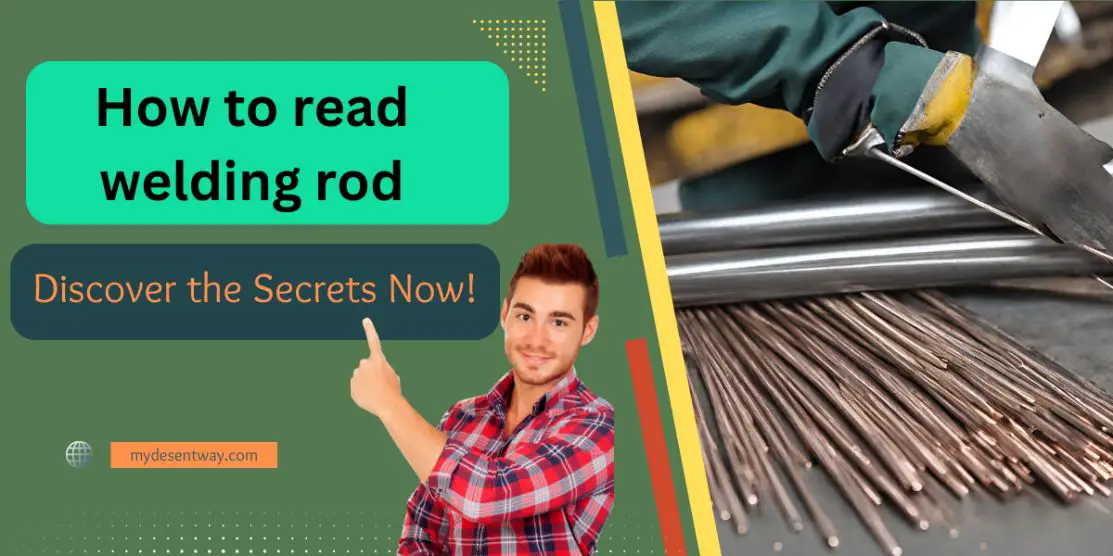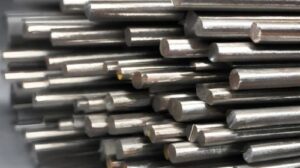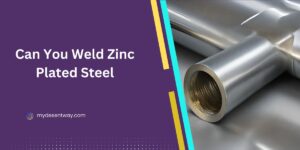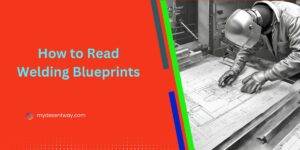Table of Contents
Now that you’ve chosen to learn how to weld, do you find it hard to understand the language of welding rods?
Do not be afraid, fellow apprentice in the metal world! We’ll solve the mystery of how to read welding rods with this help.
We’ll show you how to read those sparking sticks, whether you’re a seasoned welder who wants to brush up on your skills or a beginner who can’t wait to pick up the torch!
The Basics: What’s in a Welding Rod?
1. Understanding the Composition:
Welding rods, those thin metal wands of magic, are made of different materials. Here is a quick list of the main ingredients:
- Core Wire: The heart of the rod is usually made of mild steel, stainless steel, or aluminum.
- Flux Coating: The outer layer that dances with the flames, protecting the molten metal pool from impurities.
2. Decoding the Numbers:
Have you ever seen those strange numbers on the side of your welding rod? They’re not just for looks! Let’s figure it out:
- First Two Digits: Indicates the tensile strength of the rod. The higher the number, the stronger the weld.
- Third Digit: Describes the welding position. A ‘1’ means all positions, ‘2’ suggests flat and horizontal welding, and ‘4’ is for overhead welding.
- Fourth Digit: Reveals the coating type and the welding current. From cellulose to rutile, each number has its tale to tell.
The Cause: Reading Welding Rods!
1. Color Me Welding:
As you swing your rod, pay attention to the colors. They say a lot.
- Stable Arc: A calm and collected blue flame indicates a stable arc. The welding rod is whispering, We’ve got this, mate!
- Sputtering Arc: If the arc starts flickering and sputtering, it’s a sign of trouble. Check your settings, and the rod might say, “Hey, let’s smooth things out, shall we?”
2. Length Matters, Mate!
No, we’re not talking about the size of the welding rod, but its length during welding! Pay attention to the following:
- Stubby Arc: If your rod is too close, you’ll get a stubby arc. The welding rod is signaling. Can you give me a bit of room, please?
- Long Arc: Pull it too far away, and you’ll have a long arc. The rod protests, “I can’t work miracles from a distance – bring me closer.
Troubleshooting Common Issues
Reading welding rods can be a smooth process, but like any skill, it has its share of challenges. Understanding common issues and having the knowledge to troubleshoot them is essential for achieving consistent and high-quality welds.
This section will address some of the most common problems encountered when reading welding rods and provide practical solutions and tips to overcome them.
Common Problems When Reading Welding Rods:
- Inconsistent Arc Stability:
- Issue: The arc may flicker or become unstable during welding.
- Solution: Ensure a clean and dry work environment, as moisture and contaminants on the welding rod can disrupt the arc. Check the power source and adjust the amperage settings for optimal stability.
- Excessive Spatter:
- Issue: Splattering of molten metal during welding.
- Solution: Excessive spatter often results from the wrong welding rod or incorrect amperage settings. Double-check the welding rod compatibility and adjust the settings accordingly. Proper cleaning of the work surface also helps minimize spatter.
- Inadequate Penetration:
- Issue: Welds lack depth and penetration.
- Solution: Insufficient penetration may occur due to improper welding angle or too high travel speed. Adjust the angle and travel speed to allow for better penetration. Also, ensure the welding rod size is suitable for the project.
- Porosity in Welds:
- Issue: Small cavities or bubbles in the weld bead.
- Solution: Porosity is often caused by moisture or contaminants on the welding rod. Store welding rods in a dry environment, and use a clean brush to remove any surface contaminants before welding. Adjusting the shielding gas flow can also help prevent porosity.
Tips for Troubleshooting:
- Regular Visual Inspection:
Conduct visual inspections of welding rods before use. Look for any signs of damage, such as cracks, rust, or deformities. Discard any compromised welding rods to avoid defects in the weld.
- Adjusting Welding Parameters:
Be proactive in adjusting welding parameters based on the project’s specific requirements. Experiment with different amperage settings to achieve the desired arc stability and penetration.
- Practice Bend Tests:
Regularly perform bend tests on sample welds to assess the quality of the weld bead. This proactive approach lets you identify potential issues before starting a critical project.
- Investigate Inconsistent Welds:
If experiencing inconsistent welds, investigate and identify the root cause. It could be related to the welding rod, power source, or environmental factors. Addressing the issue promptly ensures consistent weld quality.
- Consulting Experienced Welders:
Seek advice from experienced welders or mentors when facing persistent issues. They may provide valuable insights and tips based on their own experiences.
By addressing these common problems and implementing the suggested solutions and tips, welders can troubleshoot issues effectively and enhance the overall quality of their welds. Remember, troubleshooting is a valuable skill that evolves with experience, so don’t hesitate to experiment and learn from each welding project.
Conclusion
And there you go – now you know how to read welding rods! From figuring out what they’re made of to understanding the sparks, you’re all set to handle welding rods like a pro. When you encounter challenges, dive into the world of troubleshooting common issues.
This involves addressing the typical problems faced when reading welding rods, and we’ve got you covered with practical solutions and valuable tips to troubleshoot. It’s not just about doing the moves; it’s about listening to what the rod tells you.
So, get your gear, light up that torch, and let the welding rod be your guide as you create your metal masterpiece! Enjoy welding!
FAQs about How to read welding rod
How do I know which welding rod to use for a specific project?
Understanding the material compatibility and intended application is crucial. Check the welding rod labels for information on suitable materials and recommended applications.
What should I do if I notice defects on a welding rod?
Visual defects can compromise weld quality. Discard any welding rods with visible defects and replace them with new, undamaged ones.
Can I use a larger welding rod for a smaller project?
It’s recommended to use the appropriate size for the project. Using a larger welding rod may result in uneven welds and compromise the strength of the joint.
How often should I perform a bend test on welding rods?
A4: Conduct a bend test before starting a new welding project and periodically during extended use to ensure the welding rods remain in good condition.
Can I Weld Different Metals with the Same Rod?
Ah, the age-old question! While some rods are versatile, it’s often best to match the rod to the metal. Think of it like finding the perfect dance partner – chemistry matters!










